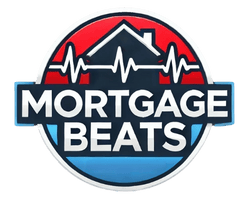Introduction to Mortgage Payments
When you take out a mortgage, your monthly payment typically consists of four components: principal, interest, taxes, and insurance (PITI). The principal is the amount you borrowed, while the interest is the cost of borrowing that money. Taxes and insurance are often escrowed and paid by the lender on your behalf. Understanding how these components work can help you make informed decisions about paying down your mortgage more efficiently.
Most homeowners focus on making their regular monthly payments without realizing they have options to pay down their mortgage faster. One such strategy is making principal-only payments, which directly reduce the loan balance rather than covering interest or other fees. This approach can save thousands of dollars in interest over the life of the loan and help you build equity faster.
If you’re considering ways to accelerate your mortgage payoff, it’s important to consult with mortgage professionals who can guide you. Companies like NorCal Real Estate & Financial Service specialize in helping homeowners optimize their mortgage strategies, ensuring they make the most of their financial decisions.
Understanding Principal vs. Interest
Every mortgage payment you make is divided between principal and interest. In the early years of your loan, a larger portion of your payment goes toward interest, while only a small fraction reduces the principal. This is due to the amortization schedule, which front-loads interest payments to benefit the lender.
As time passes, the balance shifts. More of your monthly payment goes toward the principal, and less goes toward interest. This is why homeowners who refinance or sell early in their loan term often feel like they haven’t made much progress in paying down their debt. Understanding this breakdown is crucial if you want to take control of your mortgage and reduce your long-term costs.
One way to counteract this imbalance is by making additional payments that go entirely toward the principal. This strategy can significantly shorten your loan term and save you money. Mortgage experts at NorCal Real Estate & Financial Service can help you analyze your amortization schedule and determine whether principal-only payments are right for your financial situation.
What Is a Principal-Only Payment?
A principal-only payment is an extra payment made toward your mortgage that goes entirely toward reducing the loan balance, rather than covering interest or escrow. Unlike regular mortgage payments, which are split between principal and interest, these additional payments are applied directly to the principal, accelerating your path to full homeownership.
These payments can be made at any time, whether as a one-time lump sum or as recurring additional payments. Some homeowners choose to add a small amount to each monthly payment, while others make larger contributions when they receive bonuses, tax refunds, or other windfalls. The flexibility of principal-only payments makes them an attractive option for those looking to pay off their mortgage early.
However, not all lenders automatically apply extra payments to the principal. Some may apply them to future payments instead, which doesn’t provide the same financial benefit. That’s why it’s important to communicate with your lender and specify that any additional funds should go toward the principal. Working with a trusted mortgage advisor like NorCal Real Estate & Financial Service ensures that your extra payments are processed correctly for maximum benefit.
How Principal-Only Payments Work
When you make a principal-only payment, the entire amount is deducted from your outstanding loan balance. This immediately reduces the amount of interest you’ll pay over the life of the loan, since interest is calculated based on the remaining principal. For example, if you have a $300,000 mortgage at 4% interest, a $1,000 principal-only payment could save you around $40 in interest per year—and much more over the long term.
The impact of principal-only payments is most significant early in the loan term when interest makes up the largest portion of your payments. By reducing the principal early, you effectively shorten the loan’s lifespan. Even small additional payments can shave years off a 30-year mortgage, allowing you to own your home outright much sooner than expected.
To ensure these payments are applied correctly, you must clearly indicate to your lender that the extra funds are for principal reduction. Some lenders require a written request or a specific notation on the payment. Mortgage professionals at NorCal Real Estate & Financial Service can help you navigate these requirements and ensure your payments are processed the way you intend.
Benefits of Making Principal-Only Payments
The most obvious benefit of principal-only payments is the interest savings. Since mortgage interest compounds over time, reducing the principal early can lead to substantial savings. For example, paying an extra $200 per month on a $300,000 mortgage at 4% interest could save you over $50,000 in interest and cut the loan term by several years.
Another advantage is building equity faster. Home equity is the difference between your home’s value and your mortgage balance. By paying down the principal, you increase your ownership stake in the property, which can be useful if you need to refinance, take out a home equity loan, or sell the home in the future.
Additionally, paying off your mortgage early provides financial freedom. Without a monthly mortgage payment, you can redirect those funds toward investments, retirement, or other financial goals. For homeowners looking to maximize their long-term wealth, principal-only payments can be a smart strategy. Companies like NorCal Real Estate & Financial Service can help you calculate the potential savings and create a customized payment plan.
Potential Drawbacks to Consider
While principal-only payments offer many benefits, they aren’t the right choice for everyone. One drawback is that they tie up cash that could be used for other investments. If you have high-interest debt, such as credit cards or personal loans, paying those off first may provide a better return than reducing your mortgage principal.
Another consideration is liquidity. If you put all your extra money toward your mortgage, you may have less cash available for emergencies or other opportunities. Financial experts generally recommend maintaining an emergency fund before aggressively paying down a mortgage.
Finally, some mortgages have prepayment penalties, which charge a fee for paying off the loan early. While these penalties are rare today, they can negate the benefits of principal-only payments. Before making extra payments, review your loan terms or consult with a mortgage specialist like NorCal Real Estate & Financial Service to avoid unexpected costs.
When Should You Make Principal-Only Payments?
Principal-only payments are most effective when you have a stable financial foundation. If you’ve already paid off high-interest debt, built an emergency fund, and are contributing to retirement accounts, then extra mortgage payments can be a wise move. They’re particularly beneficial for homeowners with long-term, fixed-rate mortgages who plan to stay in their homes for many years.
They’re also useful if you want to eliminate private mortgage insurance (PMI). Once your loan-to-value ratio drops below 80%, you can request PMI cancellation. Making principal-only payments can help you reach that threshold faster, saving you hundreds of dollars per year.
If you’re unsure whether principal-only payments align with your financial goals, a consultation with NorCal Real Estate & Financial Service can provide clarity. Their experts can assess your situation and recommend the best strategy for your needs.
How to Set Up Principal-Only Payments
Setting up principal-only payments varies by lender. Some allow you to make additional payments online by selecting a “principal-only” option, while others require written instructions. Contact your loan servicer to confirm their process and ensure your extra payments are applied correctly.
If you plan to make recurring principal-only payments, consider setting up automatic transfers. Many lenders offer biweekly payment plans, which result in one extra full payment per year—all of which goes toward principal. This automated approach ensures consistency without requiring manual effort each month.
For homeowners who prefer personalized guidance, NorCal Real Estate & Financial Service can help coordinate with your lender and set up a payment plan that maximizes your mortgage payoff strategy.
Tax Implications of Principal-Only Payments
One common question is whether principal-only payments affect taxes. Unlike mortgage interest, which may be tax-deductible (depending on your loan size and tax situation), principal payments do not offer any direct tax benefits. However, the long-term savings from reduced interest often outweigh the lack of a tax deduction.
If you’re using a home equity loan or HELOC for principal payments, the interest may still be deductible if the funds are used for home improvements. Tax laws can be complex, so it’s wise to consult a tax professional before making financial decisions.
Mortgage advisors at NorCal Real Estate & Financial Service can also provide general guidance on how principal-only payments fit into your overall financial plan, though they always recommend consulting a tax expert for personalized advice.
Alternative Strategies to Pay Off Your Mortgage Faster
If principal-only payments aren’t feasible, other strategies can help you pay off your mortgage sooner. Refinancing to a shorter-term loan (e.g., from 30 years to 15 years) can lower your interest rate and accelerate payoff, though monthly payments will be higher.
Another option is making biweekly payments instead of monthly ones. By splitting your payment in half and paying every two weeks, you end up making 13 full payments per year instead of 12, reducing your loan term without a drastic change in cash flow.
For homeowners seeking the most effective payoff strategy, NorCal Real Estate & Financial Service offers tailored mortgage solutions. Their experts can compare different methods and help you choose the best approach based on your financial situation.
Conclusion
Principal-only payments are a powerful tool for homeowners looking to save on interest, build equity faster, and achieve mortgage-free living sooner. While they require discipline and financial stability, the long-term benefits can be substantial.
Before committing to this strategy, evaluate your overall financial health, review your loan terms, and consider consulting with mortgage professionals. Companies like NorCal Real Estate & Financial Service provide expert advice to help you make informed decisions about your mortgage payoff plan.
Whether you choose principal-only payments, refinancing, or another method, taking proactive steps toward paying off your mortgage can lead to greater financial security and peace of mind. With the right strategy, you can turn your home into a true asset—one that works for you, not against you.
Ready To Get The Best Financial Advise, Email us at: Chris@mortgagebeats.com



